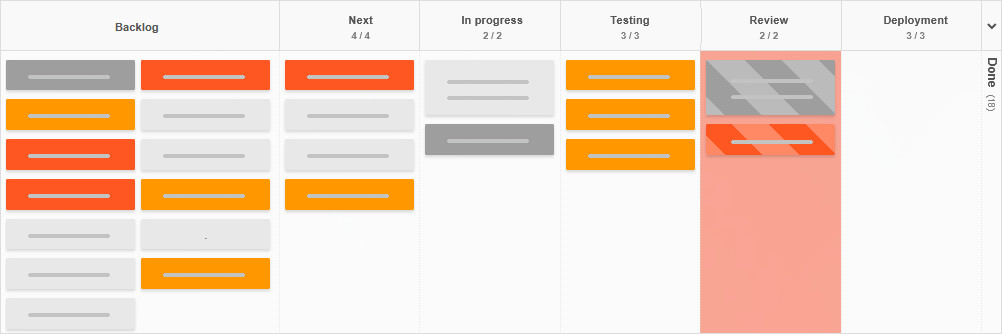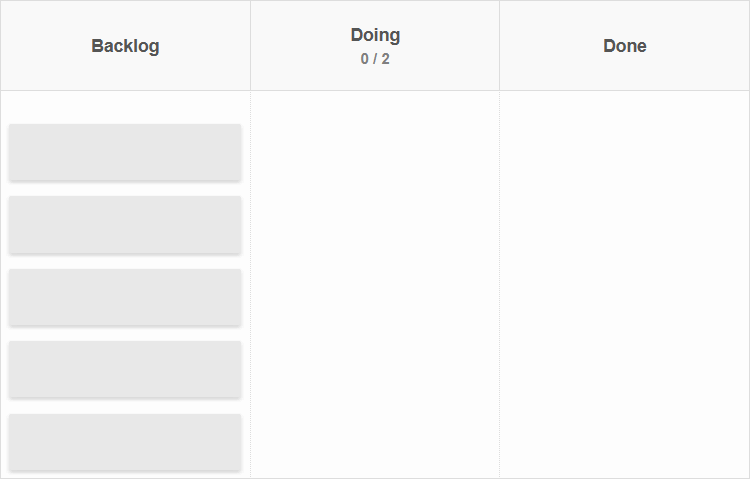Blog
Why Smart Teams Use WIP Limits, and How It Transforms Everything22 Apr 2025

The modern workplace is obsessed with velocity—more tasks, faster delivery, tighter cycles. And somewhere along the way, we started measuring productivity by the length of our to-do lists rather than our work's impact. Enter the Kanban board, specifically, one with well-considered Work In Progress (WIP) limits. Not a silver bullet, but close.
And no, WIP limits aren’t about doing less! They’re about stopping the slow bleed of inefficiency from doing too much all at once.
The infinite bandwidth myth
Most of us don’t realize we’re operating under the assumption of infinite bandwidth. The more cards on the board, the more “active” our team looks. But such hyperactivity often masks dysfunction. Tasks stall midway, priorities blur, and nobody knows who’s doing what, while progress becomes mostly cosmetic — a dance of many moving cards, not delivering many outcomes.
When WIP limits are enforced, this illusion can easily dissolve. By capping the number of active items per workflow column — whether that’s “In Progress”, “In Review”, or “Testing” — you can surface exactly where the system clogs. It’s a lot like closing all the tabs in your browser except the ones you're using. Suddenly, the signal-to-noise ratio improves.

Bottlenecks aren't the villains you think they are
Most teams treat bottlenecks like fire hazards, believing they must avoid them at all costs. However, with WIP limits in place, bottlenecks become diagnostic tools. When your “Review” column consistently hits its cap, you’re no longer guessing — you’re seeing, with painful clarity, that code review is a resource gap. Perhaps your senior engineers are stretched too thin. Maybe quality checks are too rigorous for the available time. Either way, you’ve ended up with something actionable, not anecdotal.
And more importantly, work-in-progress limits make these constraints impossible to ignore. A stagnant board doesn’t lie.

Stress is the smoke, not the fire
There is a unique, quiet kind of stress simmering in chaotic systems. It's the stress of always being “almost done” with everything, of handing things off into a black hole of invisible processes. WIP limits interrupt that loop. When everyone can see that only three items can be in testing, or only two stories can be worked on simultaneously, the team calibrates itself around flow — not frenzy.

Somewhat paradoxically, narrowing scope reduces anxiety, as attention replaces flailing. And it is the mental clarity that makes the difference between burning out and locking in!
The productivity nobody talks about
Productivity isn’t only a matter of throughput — it’s also about rhythm. A Kanban board with smart WIP limits can hum like a well-tuned machine. Team members aren’t wastefully context-switching every fifteen minutes, nor are they chasing phantom feedback loops. Everyone knows what “done” looks like, and what’s required to get there.

This cohesion builds momentum. Tasks don’t just get completed, but traverse the board with velocity and quality. And that would be the productivity that sticks — not the vanity metric of how many things were started, but the solid pace of meaningful work moving out the door.

Job satisfaction — the quiet outcome
Hardly anyone is motivated by sitting in endless standups and wondering where the bottleneck is. We want to contribute, to feel like we’re part of a collaborative system that works. Relying on WIP limits can send a clear message: this team respects focus, values flow, and wants your best work, not just your busiest self.
And when that happens, burnout drops, while morale lifts! Team members feel seen not just as resources, but as humans whose attention and energy are finite — and therefore worth managing with care.

The takeaway
Applying and respecting WIP limits on a team Kanban board isn’t micromanagement. It’s system design - a conscious choice to trade chaos for clarity, stress for signal, and busyness for results. If your team feels stuck, unfocused, or perpetually overwhelmed, don’t sprint harder, but zoom out. Set the limits and watch what happens!
Sometimes, doing less is the fastest way to get more done.
Sign up for a 14-day free trial
to test all the features.
Sign up now and see how we can help
your organization deliver exceptional results.